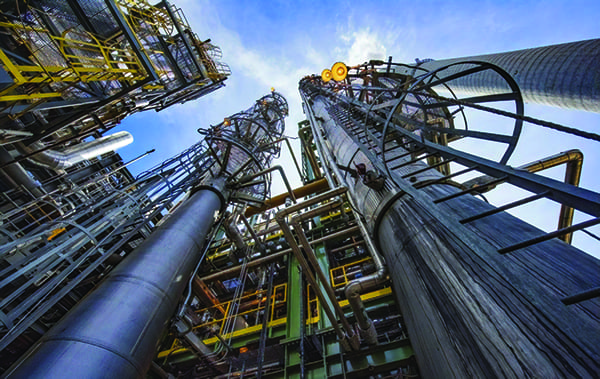Deployment of Carbon Capture Technology Likely to Explode in Coming Years
Credit to Author: Aaron Larson| Date: Wed, 01 Mar 2023 05:16:00 +0000

I haven’t always believed carbon capture, utilization, and storage (CCUS) technology would play a big role in the energy transition. While I knew the technology was sound and has been used at commercial-scale for more than 20 years, I thought the capital costs, operations and maintenance expense, and heat rate and capacity-derating penalties would preclude extensive use of CCUS technology. However, my view has changed.
High Demand for Carbon Capture
Many experts say large-scale deployment of CCUS technology is imperative for the world to achieve net-zero carbon emissions goals by 2050. In a special report published by the International Energy Agency (IEA), it says, “Reaching net zero will be virtually impossible without CCUS.”
There are several other studies that have produced similar findings. During a media briefing hosted by the CCUS industry-advocacy group Carbon Capture Coalition, Xan Fishman, director of Energy Policy and Carbon Management with the Bipartisan Policy Center, a Washington, D.C.–based think tank, offered insight from the Net-Zero America study, a two-year project conducted by researchers at Princeton University. “They had five major models—every single one of them required CCUS to achieve net zero,” Fishman said.
Taking it a step further, Fishman explained that the researchers “ran a bunch of variants of their modeling,” and variant number 55 was particularly notable. “They tried to artificially constrain things so that no CCUS was allowed, and what they found is that no feasible model would work with that constraint,” said Fishman.
Going back to the IEA report, it says the global carbon management industry will need to capture eight gigatons of CO2 per year to reach net zero by 2050. Mahmoud Abouelnaga, solutions fellow with the Center for Climate and Energy Solutions (C2ES), suggested that’s equivalent to removing eight times the CO2 emissions from every coal power plant in the U.S. today. That’s mind-boggling.
Investments Are Happening
A lot of money is being spent on carbon capture, not only by private companies trying to gain a foothold in the potential market, but also by the U.S. government to help enhance and promote the technology. “Carbon management has seen an incredible increase in federal policy support over the last decade or so,” said Madelyn Morrison, government affairs manager with the Carbon Capture Coalition. “The 117th Congress passed two of the most consequential packages for climate and energy policy in the nation’s history, and funding and policies to support the commercialization of carbon management were really essential pieces of both of those broader packages,” she said.
The Inflation Reduction Act (IRA), for example, significantly enhanced and restructured the 45Q tax credit to make it more easily accessible to the energy and manufacturing sectors, among others. The provisions include a seven-year extension of the commence-construction window, which gives project developers a concrete investment horizon for developing projects. Now, projects that commence construction before Jan. 1, 2033, will be able to qualify for 45Q.
But that’s not all. Congress also passed the Infrastructure Investment and Jobs Act, or the Bipartisan Infrastructure Law, as it’s often called. That act made the single-largest investment in carbon management technologies in history—about $12.1 billion in funding over five years for commercial deployments, large-scale demonstrations, and other programs to enable the deployment of the full value chain of carbon management technologies.
Cost Curves Will Come Down
While first-generation capture technologies are ready for commercial-scale deployment today, new capture technologies are in various stages of development, and many of them promise to significantly lower costs and improve performance of carbon management systems. Morrison said measures enacted by Congress over the past couple of years “are going to be really critical for driving down costs and making these projects more economical.”
A couple of companies working to improve performance of systems and shift cost curves in the right direction are Carbon America and Carbon Capture Inc. Reece Rushing, director of Policy and Government Affairs with Carbon America, said his company is developing a cryogenic point-source capture system called FrostCC. He said the system is set to undergo testing early this year at the National Carbon Capture Center in Wilsonville, Alabama.
Carbon America’s system is designed for low-cost, mass-manufacturing with modular scalable components that can be used for the full range of permitting industries, according to Rushing. He said it doesn’t use water or added chemicals, and the company expects it to be “two to five times cheaper than existing systems.” It also promises improved performance, reportedly capable of capturing greater than 99% of CO2 emissions, while also removing other hazardous air pollutants including SOx, NOx, mercury, and particulate matter. Commercial availability is expected by 2024 for 100,000 ton/year systems, and by 2026 for 1 million ton/year designs.
Meanwhile, Patricia Loria, vice president of Business Development with Carbon Capture Inc., a company keenly focused on direct air capture (DAC) technology, touted her group’s recently announced Project Bison, “which will be the largest direct air capture facility in the world in Wyoming.” The project is expected to be operational by late 2023, at which point, it would be the first atmospheric carbon removal facility to use Class VI wells for permanent storage, as well as the first massively scalable DAC project in the U.S.
“We are able to make those commitments because of the support of IRA. That increase of the tax credit to $180 really does make feasible a significant amount of deployment … and that’s really critical to getting cost reduction down…. We do believe that carbon management is going to be a cost-effective part of the solution,” said Loria. I’m beginning to agree.
—Aaron Larson is POWER’s executive editor.
The post Deployment of Carbon Capture Technology Likely to Explode in Coming Years appeared first on POWER Magazine.